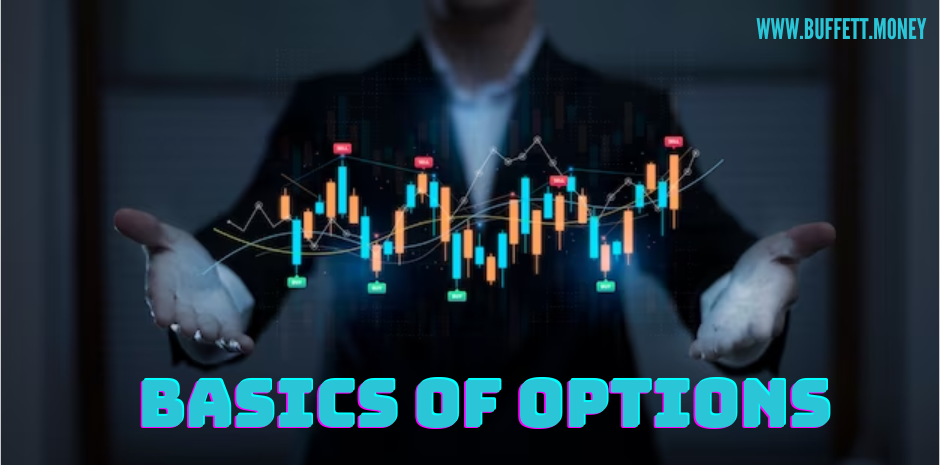
Options trading is a financial derivative strategy that involves buying and selling options contracts based on the underlying asset. This underlying asset can be stocks, commodities, indices, or even other options. Options provide traders with the right, but not the obligation, to buy (call option) or sell (put option) the underlying asset at a specified price (strike price) on or before a specified expiry date.
Table of Content :-
There are two primary types of options :-
1. Call Options : A call option gives the holder the right to buy the underlying asset at a specified price before or on the expiration date. Traders typically buy call options when they anticipate the underlying asset’s price will rise by paying the premium. On the other hand traders sell call options when they anticipate the underlying asset’s price will fall. They get the premium for that, so that is the income of seller.
2. Put Options : A put option gives the holder the right to sell the underlying asset at a specified price before or on the expiration date . Traders usually buy put options when they expect the underlying asset’s price to fall by paying the premium. On the other hand traders sell out options when they anticipate the underlying asset’s price will rise. They get the premium for that, so that is the income of seller..
Options trading can be used for various purposes, including speculation, hedging, income generation, and risk management.
Here are some key concepts of options trading :-
- Strike Price : The price at which the underlying asset can be bought (for call options) or sold (for put options) if the option is exercised. This is the trading price at which a trader buys or sells options. This can vary from time to time depending on many factors which we will discuss in 2nd half of the post.
- Expiry Date : The date on which the options contract expires. After this date, the option is no longer valid. In India European options are there. In this stocks’ option contract expires on the last Thursday of the month whereas Nifty expires every Thursday and Bank Nifty options contract expires every Wednesday.
- Premium : The price paid to purchase an options contract. This is the upfront cost of the option. Option buyer always pays premium to the option seller. In that case income of the option seller is that premium which he gets from the option buyer whereas income of the buyer will be equal to the price that will go above the premium he paid.
- In-the-Money (ITM) : An option that would be profitable to exercise if it were to expire immediately. For calls, it means the strike price is lower than the current market price of the underlying asset; for puts, it means the strike price is higher or above the current market price of the underlying asset. Option buying should be done In-the-Money (ITM).
- Out-of-the-Money (OTM) : An option that would not be profitable to exercise if it were to expire immediately. For calls, it means the strike price is higher than the current market price of the underlying asset; for puts, it means the strike price is lower or below the current market price of the underlying asset. Option selling should be done Out-of-the-Money (OTM).
- At-the-Money (ATM) : An option with a strike price that is approximately equal to the current market price of the underlying asset. ATM options trade are always done by highly experienced traders because this strike price has higher volatility.
Factors that affect the Strike Price and Premium of options :-
1. Market Conditions :
The prevailing market conditions and the supply and demand for the underlying asset can significantly impact the strike price. If an asset is in high demand, the strike price for call options (which allow you to buy the asset) may be set higher, while for put options (which allow you to sell the asset), it may be set lower.
2. Implied Volatility :
Implied volatility reflects the market’s expectation of future price fluctuations in the underlying asset. Higher implied volatility tends to result in higher options premiums. As a result, strike prices can be adjusted to account for expected volatility levels. In times of higher expected volatility, options strike prices may be set further apart from the current market price to account for the increased risk.
3. Time to Expiry :
The amount of time remaining until the option’s expiration date also affects the strike price. Options with longer expiration periods may have strike prices set differently than options with shorter expiration periods. Options with longer expiry dates have usually higher premiums rather than options with shorter expiry. With time always premium decays and goes in the pocket of options seller from the pocket of options buyer.
4. Technical Analysis :
Technical analysis, which involves studying historical price patterns and trends, can also impact strike prices indirectly. Traders and market participants may use technical analysis to make informed decisions about option strike prices based on support and resistance levels, chart patterns, and other technical factors. If the pattern is bullish then the premium of OTM put will be lower as compared to the premium of OTM call.
Conclusion :-
Options trading can be complex and involve risks, including the potential loss of the entire premium paid for the option. It’s essential for traders to understand the mechanics, strategies, and risks involved before engaging in options trading and to consider factors such as their risk tolerance, investment goals, and market conditions when formulating trading strategies. Additionally, it’s often advisable to consult with a financial advisor or professional with expertise in options trading before getting started.
So, before you start working in Options you should have minimum experience of 3 years in direct equity. First learn the price action and then start with option selling. Don’t run behind quick money and try options buying without a good experience in the stock market.
Learn More :
Thank you for reading Buffett Money’s guide on the Basics of Options Trading. To keep learning and developing your knowledge of financial analysis, we highly recommend the additional resources below:
- Penny Stock
- High Growth Stocks
- Dividend Yield Stocks
- False Breakout Stocks
- Fundamentally strong stocks
- Importance of Paper Trading
- Importance of Trading Journal
- AI impact on Algo Trading
- Averaging Down Strategy
- Moving Average Strategy
- Bulk Deal Strategy
- Methods of Stock Market Prediction
Thank You
Happy Investing
This all is just for information purpose. Do your own study before investing or consult your financial advisor.



Pingback: Profit Powerhouse : Why Option Selling better Over Option Buying -